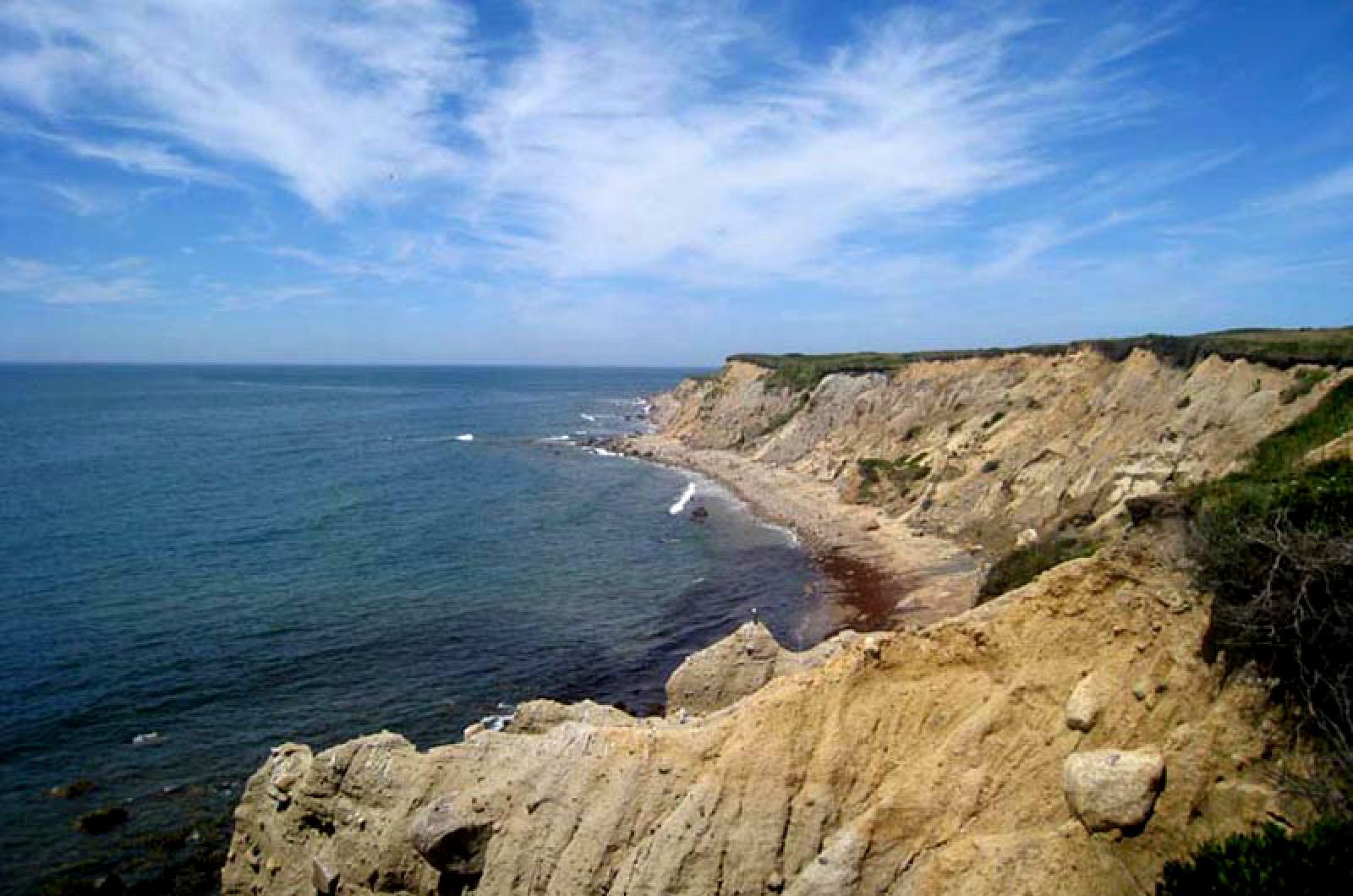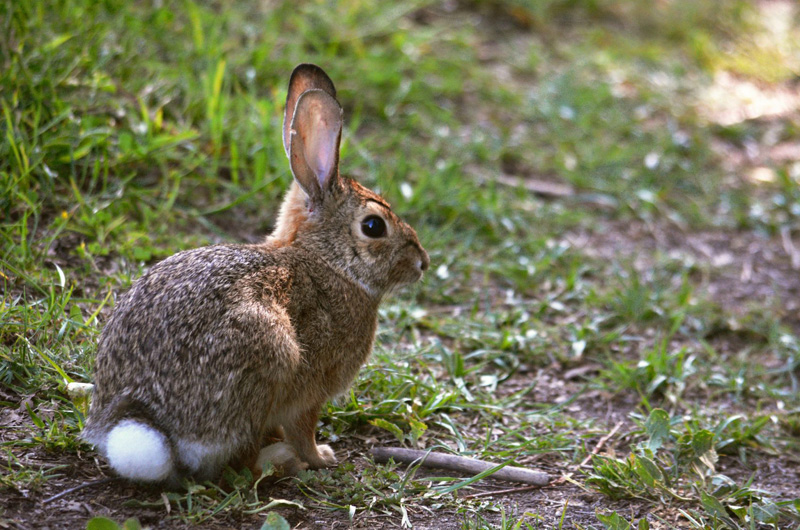Noman’s Land, the small, uninhabited island south of Martha’s Vineyard, could play a key role in boosting the dwindling population of New England cottontail rabbits.
The U.S. Fish and Wildlife Service last week unveiled a proposal to establish a population of the rabbits on the island that is now a national wildlife refuge.
A healthy population of New England cottontails has been established on Patience Island in Rhode Island.
Federal officials said Noman’s offers ideal habitat for New England cottontails, which live in dense thickets found in young forests or shrubland. The rabbits are a native species and were once abundant from southeastern New York to Maine, including on the Vineyard and Noman’s, which lies three miles off Chilmark.
The species dwindled because of development and habitat loss. According to the government, the last documented sighting of a New England cottontail on the Vineyard was in 1984.
Today the rabbits are found only in small, distinct areas, including on Cape Cod.
Eastern cottontails, a nonnative species introduced to New England in the early 1900s, are now more abundant than the native New England cottontails. Rabbits seen on the Vineyard are eastern cottontails. The two species look similar; New England cottontails have slightly shorter ears and a line of black fur.
New England cottontails are being bred in captivity at Roger Williams Zoo in Providence, R.I. and Queens Zoo in New York. Some captive-bred rabbits have been released, including on Patience Island in Narragansett Bay, which is now home to more than 60 cottontails.
Fish and Wildlife officials said they believe Noman’s could support 600 or more New England cottontails. The island is more than 628 acres and was once inhabited by humans, as evidenced by Native American burial grounds, European cemeteries, and even an apocryphal Viking runestone. From the 1940s to 1976, it was used by the Navy as an aerial bombing and gunnery range. Today the island is closed to the public because of unexploded ordnance. In 1998 it became a national wildlife refuge, and is primarily a sanctuary for migrating birds.
The idea of introducing New England cottontails to the habitat has been in discussion since at least 2010.
According to a government environmental assessment, the island offers ideal, stable coastal shrubland habitat for the cottontails, along with an absence of mammalian predators and eastern cottontails.
The population would be created through the release of wild-caught rabbits or rabbits raised through one of the captive breeding programs.
The U.S. Fish and Wildlife Service is seeking public comments on the proposal, available online and at the Aquinnah public library. Comments are due by March 2.







Comments (7)
Comments
Comment policy »